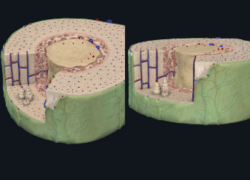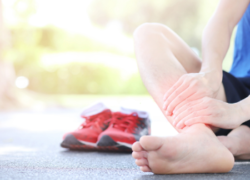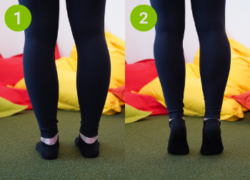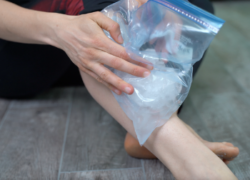When you start training or practicing a new sport, it is normal to experience muscle soreness or increased sensitivity after the activity. However, persistent pain should not be ignored. Runners are particularly at risk of developing injuries and discomfort during their sport. In fact, runner’s shin splints are one of the most common injuries among novice runners.
Runner’s shin splints typically manifest as pain in the shin during or after running. The pain can also be felt when pressing on the inner part of the shinbone. Inflammation caused by runner’s shin splints will occur in the early stages of the condition or if you continue the activity persistently despite the pain. Shin splints can lead to tissue degeneration and even micro-tears. It is often caused by a rapid increase in volume or intensity during your running sessions.
Although it is very uncomfortable, runner’s shin splints can be treated quite easily if addressed promptly. There are a few things you can do at home to help you resume training without pain before your visit to the physiotherapist.
Take it easy
Since it is often excessive impact that causes shin splints, it is necessary to reduce them to alleviate the pain. Therefore, the first thing to do if you are experiencing pain in the posterior tibial muscle is to reduce the intensity of your running sessions. Take smaller steps and run at a slower pace. It is also important to gradually resume your running activities after your injury and not rush into long distances or a high pace.
Strengthen your muscles.
To reduce the risk of shin splints reoccurring, it is necessary to strengthen the muscles surrounding the shin. Calf raise exercises are excellent for strengthening the right muscles and helping them endure the repetitive impacts associated with running. Muscle strengthening is the best solution to prevent recurrent shin splints.
Consult your physiotherapist.
Once you have reduced the intensity of your running sessions and performed exercises to strengthen your muscles, your pain should have significantly decreased. However, if the pain persists, it is possible that the issue is not directly related to running. Runner’s shin splints can be caused by a rigid foot that absorbs impacts poorly or even a problem in the back. It is recommended to visit your physiotherapist as they will be able to identify the source of the problem and help you resume training more quickly.
And what about ice?
Opinions are divided regarding the use of ice on certain injuries. One thing is certain, applying ice is only a short-term solution and may even slow down the healing process. You can apply ice to your leg after a running session to reduce inflammation, but reducing the intensity of the stressful activity and muscle strengthening are the keys to optimal rehabilitation.
In any case, a visit to your physiotherapist cannot hurt and is highly recommended! They will be able to suggest the appropriate strengthening exercises and restore proper biomechanics in your body so that you can lace up your running shoes again as soon as possible.
Don’t hesitate to make an appointment with one of our qualified professionals at one of our clinics in Greater Montreal.
Our running pros :
Florence Charbonneau-Dufresne
Dominic Baillargeon
Dave Desmeules-Doan
Eugène Beiline
Dominic Baillargeon
Physiothérapeute
Nxt Generation PHYSIO
Gabrielle Picard
Rédactrice
Nxt Generation PHYSIO






